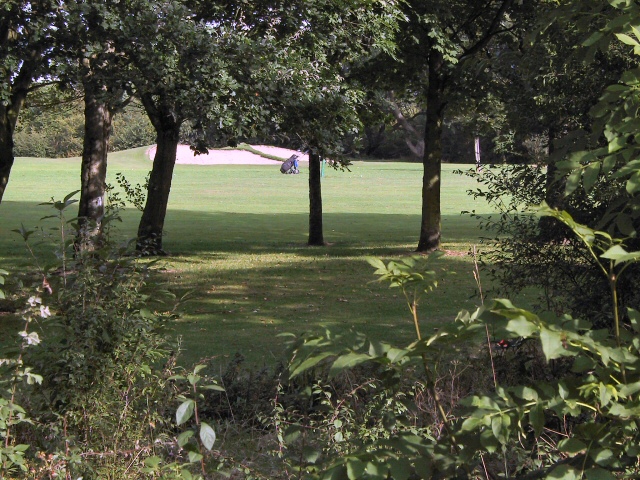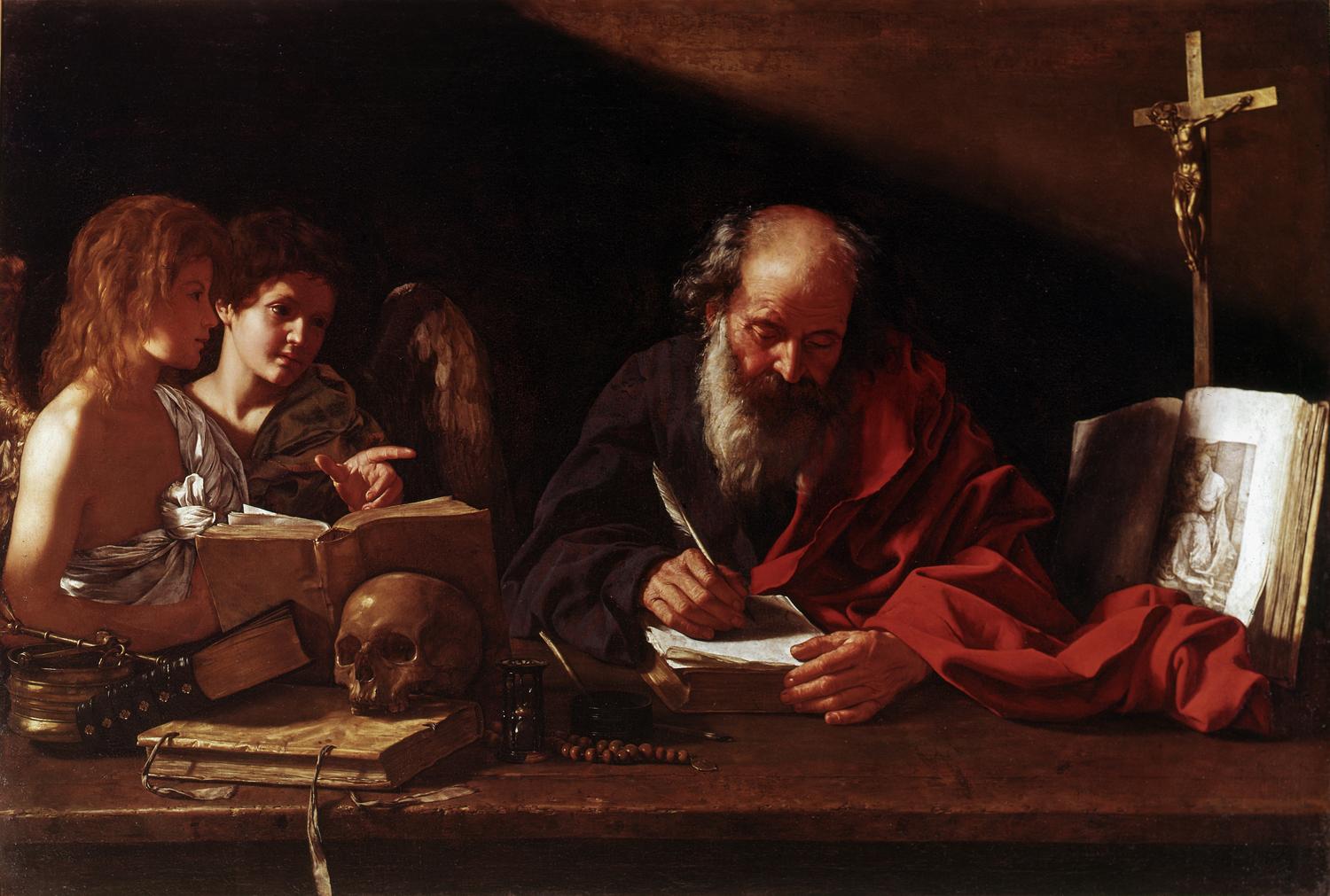|
Saint Nectan
Saint Nectan, sometimes styled Saint Nectan of Hartland, was a 5th-century holy man who lived in Stoke, Hartland, in the nowadays English, and at the time Brythonic-speaking, county of Devon, where the prominent St Nectan's Church, Hartland is dedicated to him. Life A "Life of Nectan", along with an account of the finding of his body and a collection of miracle stories, can be found in a 14th-century manuscript now in Gotha. The "Life" has been dated to the end of the 12th century. Its account holds that Nectan was born in Ireland but moved to Wales when he was young in 423 AD, the eldest of the 24 children of King Brychan of Brycheiniog (now Brecknock in Wales). Nectan heard of the great hermit of the Egyptian desert, Saint Anthony, and was inspired to imitate his way of life. Seeking greater solitude, Nectan and his companions left Wales, intending to settle wherever their boat happened to land. Nectan and his companions wound up on the northern coast of Devon at Hartland, ... [...More Info...] [...Related Items...] OR: [Wikipedia] [Google] [Baidu] |
Catholic Church
The Catholic Church (), also known as the Roman Catholic Church, is the List of Christian denominations by number of members, largest Christian church, with 1.27 to 1.41 billion baptized Catholics Catholic Church by country, worldwide as of 2025. It is among the world's oldest and largest international institutions and has played a prominent role in the history and development of Western civilization.Gerald O'Collins, O'Collins, p. v (preface). The church consists of 24 Catholic particular churches and liturgical rites#Churches, ''sui iuris'' (autonomous) churches, including the Latin Church and 23 Eastern Catholic Churches, which comprise almost 3,500 dioceses and Eparchy, eparchies List of Catholic dioceses (structured view), around the world, each overseen by one or more Bishops in the Catholic Church, bishops. The pope, who is the bishop of Rome, is the Papal supremacy, chief pastor of the church. The core beliefs of Catholicism are found in the Nicene Creed. The ... [...More Info...] [...Related Items...] OR: [Wikipedia] [Google] [Baidu] |
St Nectan's Glen
Saint Nectan's Glen (, meaning ''deep wooded valley of Nathan/Nectan'') is an area of woodland in Trethevy near Tintagel, north Cornwall stretching for around one mile along both banks of the Trevillet River. The glen's most prominent feature is St Nectan's Kieve, a spectacular sixty foot waterfall through a hole in the rocks. The site attracts tourists who believe it to be "one of the UK's most spiritual sites," and tie or place ribbons, crystals, photographs, small piles of flat stones and other materials near the waterfall. History and buildings It is believed locally that, in the sixth century, Saint Nectan had a hermitage above the waterfall and rang a silver bell to warn ships of the dangers of offshore rocks at the mouth of the Rocky Valley during storms. However, this is myth concocted by Victorian romanticists such as R. S. Hawker and the valley has no religious connections save the remains of a monastery and a small chapel in nearby Trethevy dedicated to St Piran. ... [...More Info...] [...Related Items...] OR: [Wikipedia] [Google] [Baidu] |
Augustinians
Augustinians are members of several religious orders that follow the Rule of Saint Augustine, written about 400 A.D. by Augustine of Hippo. There are two distinct types of Augustinians in Catholic religious orders dating back to the 12th–13th centuries: * Various congregations of Canons Regular also follow the Rule of Saint Augustine, embrace the evangelical counsels and lead a semi-monastic life, while remaining committed to pastoral care appropriate to their primary vocation as priests. They generally form one large community which might serve parishes in the vicinity, and are organized into autonomous congregations. * Several orders of friars who live a mixed religious life of contemplation and apostolic ministry. The largest and most familiar is the Order of Saint Augustine (OSA), founded in 1244 and originally known as the Hermits of Saint Augustine (OESA). They are commonly known as the Austin Friars in England. Two other orders, the Order of Augustinian Recollects ... [...More Info...] [...Related Items...] OR: [Wikipedia] [Google] [Baidu] |
Lyfing Of Winchester
Lyfing of Winchester (died March 1046) was an Anglo-Saxon prelate who served as Bishop of Worcester, Bishop of Crediton and Bishop of Cornwall. Life Lyfing's uncle was Burhweald, Bishop of Cornwall,Lawson ''Cnut'' pp. 116–117 according to the medieval chronicler William of Malmesbury.King "Ealdred" ''Anglo-Norman Studies XVIII'' p. 124 He was probably a monk either at Winchester AbbeyBarlow "Lyfing (d. 1046)" ''Oxford Dictionary of National Biography'' or at Glastonbury Abbey. In 1009, he became Abbot of Tavistock,Knowles ''Heads of Religious Houses'' pp. 72, 255 and that was always his favourite of the offices he held. In 1027, he became the Bishop of Crediton, and about the same time he became Bishop of Cornwall on the death of his uncle Brihtwold, so he united those two sees, with the seat at Crediton.Fryde, et al. ''Handbook of British Chronology'' p. 215Barlow ''English Church 1000–1066'' p. 73 His elevation probably was due both to his family and to his assis ... [...More Info...] [...Related Items...] OR: [Wikipedia] [Google] [Baidu] |
Normans
The Normans (Norman language, Norman: ''Normaunds''; ; ) were a population arising in the medieval Duchy of Normandy from the intermingling between Norsemen, Norse Viking settlers and locals of West Francia. The Norse settlements in West Francia followed a series of raids on the French northern coast mainly from what is now Denmark, although some also sailed from Norway and Sweden. These settlements were finally legitimized when Rollo, a Scandinavian Vikings, Viking leader, agreed to swear fealty to Charles the Simple, King Charles III of West Francia following the Siege of Chartres (911), siege of Chartres in 911, leading to the formation of the ''County of Rouen''. This new fief, through kinship in the decades to come, would expand into what came to be known as the ''Duchy of Normandy''. The Norse settlers, whom the region as well as its inhabitants were named after, adopted the language, Christianity, religion, culture, social customs and military, martial doctrine of the Wes ... [...More Info...] [...Related Items...] OR: [Wikipedia] [Google] [Baidu] |
Anglo-Saxons
The Anglo-Saxons, in some contexts simply called Saxons or the English, were a Cultural identity, cultural group who spoke Old English and inhabited much of what is now England and south-eastern Scotland in the Early Middle Ages. They traced their origins to Germanic peoples, Germanic settlers who became one of the most important cultural groups in Britain by the 5th century. The Anglo-Saxon period in Britain is considered to have started by about 450 and ended in 1066, with the Norman conquest of England, Norman Conquest. Although the details of Anglo-Saxon settlement of Britain, their early settlement and History of Anglo-Saxon England, political development are not clear, by the 8th century an Anglo-Saxon cultural identity which was generally called had developed out of the interaction of these settlers with the existing Romano-British culture. By 1066, most of the people of what is now England spoke Old English, and were considered English. Viking and Norman invasions chang ... [...More Info...] [...Related Items...] OR: [Wikipedia] [Google] [Baidu] |
Middle Ages
In the history of Europe, the Middle Ages or medieval period lasted approximately from the 5th to the late 15th centuries, similarly to the post-classical period of global history. It began with the fall of the Western Roman Empire and transitioned into the Renaissance and the Age of Discovery. The Middle Ages is the middle period of the three traditional divisions of Western history: classical antiquity, the medieval period, and the modern period. The medieval period is itself subdivided into the Early, High, and Late Middle Ages. Population decline, counterurbanisation, the collapse of centralised authority, invasions, and mass migrations of tribes, which had begun in late antiquity, continued into the Early Middle Ages. The large-scale movements of the Migration Period, including various Germanic peoples, formed new kingdoms in what remained of the Western Roman Empire. In the 7th century, North Africa and the Middle East—once part of the Byzantine Empire� ... [...More Info...] [...Related Items...] OR: [Wikipedia] [Google] [Baidu] |
Shrine
A shrine ( "case or chest for books or papers"; Old French: ''escrin'' "box or case") is a sacred space">-4; we might wonder whether there's a point at which it's appropriate to talk of the beginnings of French, that is, when it wa ...: ''escrin'' "box or case") is a sacred space dedicated to a specific deity, ancestor worship, ancestor, hero, martyr, saint, Daemon (mythology), daemon, or similar figure of respect, wherein they are venerated or worshipped. Shrines often contain Cult image, idols, relics, or other such objects associated with the figure being venerated. A shrine at which votive offerings are made is called an altar. Shrines are found in many of the world's religions, including Christianity, Islam, Hinduism, Buddhism, Chinese folk religion, Shinto, indigenous Philippine folk religions, and Germanic paganism as well as in secular and non-religious settings such as a war memorial. Shrines can be found in various settings, such as churches, temples, cemeteries, or ... [...More Info...] [...Related Items...] OR: [Wikipedia] [Google] [Baidu] |
Battle Of Brunanburh
The Battle of Brunanburh was fought in 937 between Æthelstan, King of Kingdom of England, England, and an alliance of Olaf Guthfrithson, King of Kingdom of Dublin, Dublin; Constantine II of Scotland, Constantine II, King of Scotland; and Owain ap Dyfnwal (fl. 934), Owain, King of Kingdom of Strathclyde, Strathclyde. The battle is sometimes cited as the point of origin for English national identity: historians such as Michael Livingston argue that "the men who fought and died on that field forged a political map of the future that remains, arguably making the Battle of Brunanburh one of the most significant battles in the long history not just of England, but of the whole of the British Isles." Following an unchallenged Æthelstan's invasion of Scotland, invasion of Scotland by Æthelstan in 934, possibly launched because Constantine had violated a peace treaty, it became apparent that Æthelstan could be defeated only by an alliance of his enemies. Olaf led Constantine and ... [...More Info...] [...Related Items...] OR: [Wikipedia] [Google] [Baidu] |
Hermit
A hermit, also known as an eremite (adjectival form: hermitic or eremitic) or solitary, is a person who lives in seclusion. Eremitism plays a role in a variety of religions. Description In Christianity, the term was originally applied to a Christian who lives the eremitic life out of a religious conviction, namely the Catholic spirituality#Desert spirituality, Desert Theology of the Old Testament (i.e., the 40 years wandering in the Zin Desert, desert that was meant to bring about a change of heart). In the Christian tradition the eremitic life is an early form of Monk, monastic living that preceded the monastic life in the cenobium. In chapter 1, the Rule of St Benedict lists hermits among four kinds of monks. In the Roman Catholic Church, in addition to hermits who are members of religious institutes, the Canon law (Catholic Church), Canon law (canon 603) recognizes also Consecrated life#Other forms of consecrated life, diocesan hermits under the direction of their diocesan b ... [...More Info...] [...Related Items...] OR: [Wikipedia] [Google] [Baidu] |




